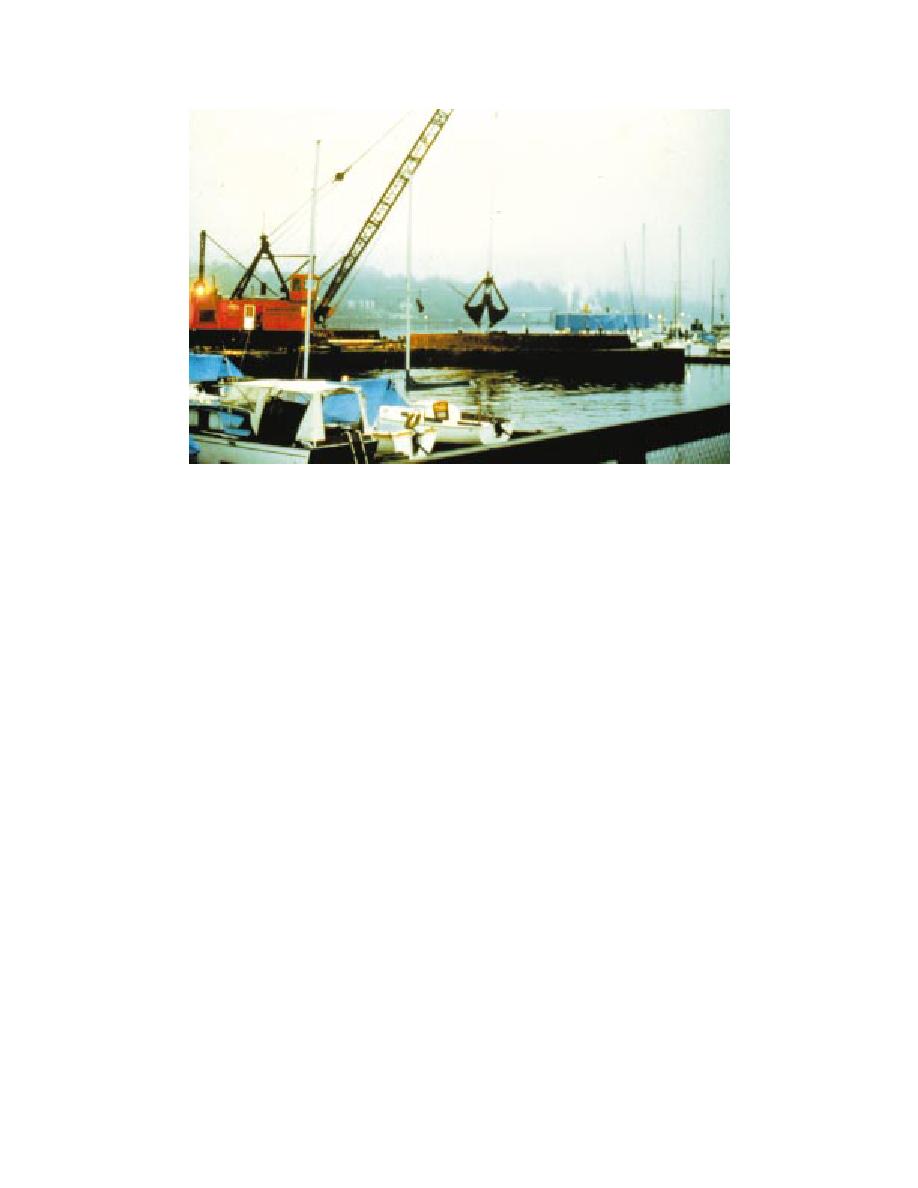 |
||
|
|
||
|
Page Title:
Figure 35. One Tree Island Marina project |
||
| |||||||||||||||
|
|
 Figure 35.
One Tree Island Marina project
of the pit was dredged by clamshell into three barges. Next, the clean
conical pit and additional clean material were dredged into an additional
split-hulled barge and disposed at another deep-water site. The pit capacity
was confirmed, and then the three barge loads of contaminated material
were placed in the pit. Finally, more clean material was dredged by clam-
shell directly into the pit to provide the 1.2-m minimum cap over the con-
taminated sediment. During dredging, a 45-m dilution zone extending
radially from the point of dredging was specified, and outside this area,
local water quality standards were maintained. A monitoring program was
conducted to evaluate the effectiveness of the cap.
Simpson Tacoma Kraft
In 1988, the Simpson Tacoma Kraft Company capped approximately
17 acres of in situ contaminated nearshore bottom area with 0.6 to 3.7 m
of sand hydraulically dredged from the Puyallup River (Sumeri 1989). The
contaminated bottom sediments were the result of 37 years of discharging
untreated mill wastewater, log storage and chipping operations, and storm-
water discharges. The site was a designated EPA Superfund site.
The Puyallup River material was predominantly medium sand with some
clay and small fractions of fine and coarse sand and traces of gravel. This
material was determined to be relatively clean by chemical and bioassay
testing and suitable for capping. Twelve- and ten-inch (30.5- and 25.4-cm)
hydraulic dredges were used to dredge approximately 152,910 m3 of cap-
ping material. This material was transported approximately 1 km through
floating and submerged pipeline to a spud barge for distribution over the
contaminated sediment area. A 2.4- by 4.3-m plywood diffuser box with
119
Chapter 10 Case Studies
|
|
Privacy Statement - Press Release - Copyright Information. - Contact Us - Support Integrated Publishing |